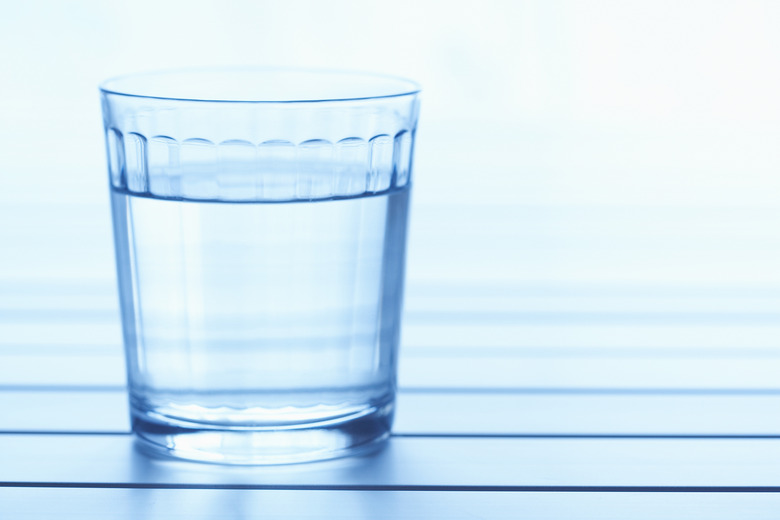How To Unclog A Zero Water Pitcher Filter
Things Needed
-
Unfiltered water
-
Tweezers
-
Test meter (provided by Zero Water)
Tip
Pre-filtering water with a high mineral content through another filtering system — such as a Pur or Brita pitcher system — may lengthen the life of the Zero Water filter.
Ask the company for a pre-filter that can be used prior to pouring water into the Zero Water pitcher filter. If the unfiltered water contains a high content of turbidity — solids in the water –even a new filter will clog almost immediately. This can be tested by filling the pitcher and watching the filtering process — turbidity causes a slow drip.
Warning
Running water over the filter will not remove deeply-lodged mineral deposits, or extend the life of the filter. It should be replaced per the company's recommendations if it is not working properly.
Health and water experts debate the benefits of completely de-mineralized drinking water, which Zero Water claims to provide.
Developed in 1990, Zero Water filters were initially marketed for commercial accounts, but bottles, coolers and pitchers are now available for home use. The company claims to provide an extremely healthy form of drinking water; their filters use a "5-Stage Dual Ion Exchange filtration process" to remove dissolved solids — such as magnesium or calcium — from the water. Consumers can use a provided "test stick" to check the water's "TDS" — total dissolved solids — level both before and after the water is filtered. Because the filters are mostly enclosed and filtrate water so deeply, consumers are limited in how they can unclog a non-working filter.
Step 1
Add water to the pitcher and time the filtration process. Although a Zero Water filter processes the added water slowly, there is a possibility of an "air lock" clogging the filter; this is usually the case if it is taking hours to filter a pitcher of water. Simply unscrew the filter from its position; then reattach it by screwing it back in. No tools are required for this process. Repeat the filtering test again; if necessary, unscrew and then reattach the filter again until the air lock clog is resolved. If this does not resolve the problem, move on to Step 2.
Step 2
Poke several holes gently into the screen of the filter with a pair of tweezers. Be careful not to punch too deeply; although the system filters water with more than the typical one or two layers, the goal is to unclog the filter — puncturing the screen too deeply could prohibit it from filtering properly. Run unfiltered water over the punctured filter to see if this has removed the obstruction. If not, move to Step 3.
Step 3
Test the TDS level of the unfiltered water with the provided test meter if the filter is still clogged. Tap water can contain from 25 to 500mg per liter of water. Zero Water filters are supposed to bring the TDS level down to zero — hence the name. The higher the TDS concentration prior to filtering, the harder the filter is working. A filter should last six months; if the filter is at or past this point, or the TDS level in the unfiltered water is on the high side, contact the company to purchase another filter and replace the clogged one.
